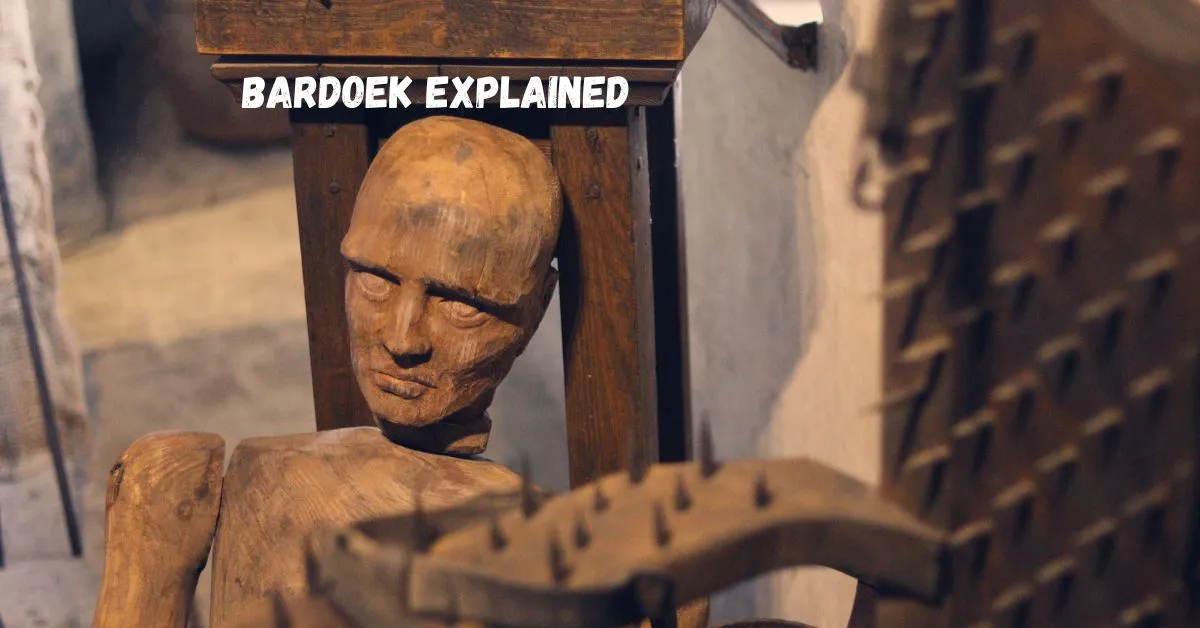Introduction:
Have you ever come across something that feels both ancient and modern at the same time—something that seems to hold a piece of history yet fits perfectly in today’s world? That’s Bardoek. More than just a material or artifact, Bardoek represents a deep cultural narrative — one shaped by craftsmanship, creativity, and heritage.
For centuries, Bardoek has symbolized strength, artistry, and connection to one’s roots. It carries with it the fingerprints of generations — artisans who poured their skill and spirit into creating something that lasts. Whether admired in traditional ceremonies or reimagined in contemporary design, Bardoek continues to bridge the gap between past and present. Let’s dive into its fascinating journey, significance, and the reason it still matters today.
What Is Bardoek? A Blend of Material and Meaning
Bardoek is not easily defined. It’s a term that encapsulates more than a tangible object — it represents craftsmanship, tradition, and resilience. In many cultures, Bardoek refers to a handmade creation crafted from durable natural materials such as wood, fiber, or stone. Yet, its essence extends far beyond the physical.
It symbolizes endurance, cultural identity, and the human ability to create beauty out of simplicity. Each piece of Bardoek often carries intricate patterns or carvings that tell a story — of the maker, the community, or the beliefs that shape their lives. Over time, it has evolved from a utilitarian element into an emblem of heritage and artistry.
The Historical Roots of Bardoek
The origins of Bardoek stretch back hundreds of years, woven deeply into local customs and ancient craftsmanship. In many regions, Bardoek was more than an object; it was a legacy. Families treasured their Bardoek creations — utensils, decorative pieces, or ceremonial items — and passed them down as heirlooms.
The very name “Bardoek” was often associated with endurance and respect. It reminded people of their ancestors’ connection to nature and their skill in transforming raw materials into lasting art. For example, in certain Southeast Asian and African traditions, Bardoek items were used in rituals symbolizing protection, prosperity, or unity.
What makes its history remarkable is how it adapted across cultures. While its origins may differ from region to region, the underlying spirit of craftsmanship remains universal — a tribute to humanity’s instinct to preserve beauty and meaning through creation.
Cultural Significance: More Than Just an Object
Bardoek holds profound cultural importance. It’s not merely something you can hold in your hands — it’s something that carries emotion, memory, and collective identity.
In traditional societies, artisans viewed their craft as sacred. Each stroke, cut, or engraving had symbolic value. Patterns represented beliefs, family ties, or spiritual meanings. In many communities, owning a piece of Bardoek meant being connected to one’s ancestors and heritage.
During cultural festivals, Bardoek often takes center stage — displayed in exhibitions, rituals, and ceremonies that celebrate craftsmanship. Even today, it’s seen as a representation of honor and pride. It connects generations, reminding people of where they come from, while continuing to evolve with time.
Modern Applications of Bardoek: Tradition Meets Innovation
You might be surprised to learn that Bardoek has found its place in the modern world too. As sustainability and authenticity gain importance, designers and artists have rediscovered Bardoek as a symbol of eco-conscious creativity.
Here are a few modern applications of Bardoek:
- Interior Design: Furniture and décor inspired by Bardoek patterns add warmth and depth to modern spaces.
- Fashion: Contemporary designers integrate Bardoek motifs into fabrics, jewelry, and accessories, blending traditional aesthetics with modern style.
- Art Installations: Many artists use Bardoek as a theme to explore heritage, identity, and sustainability through visual storytelling.
- Collectibles: Vintage Bardoek pieces are now prized by collectors who value authenticity and craftsmanship.
This modern revival ensures that the cultural spirit of Bardoek remains alive, even as it takes on new forms and functions.
The Benefits of Bardoek: Beauty, Strength, and Sustainability
Why do people continue to choose Bardoek in an age of mass production and disposable goods? The answer lies in its inherent qualities — both physical and symbolic.
- Durability and Strength: Bardoek’s traditional materials were built to last. Whether it’s wood, fiber, or stone, these creations withstand time and use.
- Cultural Value: Owning or using Bardoek connects people with their roots. It’s a daily reminder of heritage and human creativity.
- Aesthetic Appeal: The detailed patterns, textures, and forms of Bardoek pieces give them an elegance that machine-made items can’t replicate.
- Eco-Friendly Choice: In an era focused on sustainability, Bardoek stands out as a responsible choice — often handcrafted from renewable or natural resources.
- Timeless Relevance: Its blend of traditional beauty and modern design ensures that Bardoek never goes out of style.
In essence, choosing Bardoek means choosing integrity, authenticity, and conscious living.
Bardoek in Fashion and Design
Fashion and design industries thrive on stories — and Bardoek offers one of the richest narratives to tell.
Fashion
Designers worldwide have started incorporating Bardoek-inspired patterns into their work. From handwoven fabrics to jewelry that mirrors traditional motifs, Bardoek’s presence in fashion reflects a growing appreciation for heritage. These designs stand out because they’re not just beautiful — they mean something. Wearing Bardoek-inspired pieces often feels like carrying a piece of cultural history with you.
Interior and Product Design
Interior designers use Bardoek elements to introduce natural tones and textures into homes. A handcrafted Bardoek lamp, carved panel, or textile piece can transform a modern space into something warm and meaningful. The best part is that these designs aren’t static — they evolve. Each artisan interprets Bardoek differently, ensuring every creation feels personal and unique.
Preserving the Bardoek Legacy
With globalization and industrialization, many traditional crafts have faded — but efforts to preserve Bardoek are growing stronger. Cultural organizations, artisans, and local communities are working hand in hand to ensure that this craft remains relevant.
How Preservation Happens:
- Supporting Local Artisans: Buying directly from craftspeople sustains livelihoods and encourages younger generations to learn traditional methods.
- Educational Workshops: Schools and cultural centers now include heritage craft programs to pass down these skills.
- Digital Archives: Documentation of Bardoek techniques, patterns, and stories helps preserve its knowledge for future generations.
Preserving Bardoek isn’t just about saving an art form — it’s about safeguarding identity and diversity in a rapidly changing world.
Why Bardoek Still Matters Today
In a time dominated by convenience and speed, Bardoek reminds us to slow down and appreciate craftsmanship. Its continued relevance stems from three main reasons:
- Connection to Heritage: People crave authenticity — something real, something that connects them to their roots.
- Sustainability: As environmental awareness grows, the values embedded in Bardoek — resourcefulness, respect for nature, and durability — become even more meaningful.
- Creativity and Innovation: Modern artists see Bardoek as a blank canvas — a way to reinterpret tradition through a contemporary lens.
Bardoek matters because it teaches balance: between past and present, art and function, humanity and nature.
Fascinating Facts About Bardoek
- Some Bardoek pieces emit a distinct aroma when polished — a natural scent tied to the material used.
- Certain patterns in Bardoek art are unique to specific regions, serving as a cultural “fingerprint.”
- In some folklore, gifting Bardoek symbolizes eternal friendship or loyalty.
- Traditional Bardoek carving tools are often handmade and passed down through artisan families for generations.
These little-known facts show how deeply ingrained Bardoek is in cultural storytelling.
Conclusion: The Living Spirit of Bardoek
Bardoek is more than an ancient craft — it’s a living story of humanity’s connection to creativity, culture, and the natural world. Its journey from humble beginnings to modern reinvention reflects our timeless desire to create meaning through art.
As we move forward in an era that often values speed over substance, embracing Bardoek means choosing quality, sustainability, and heritage. It reminds us that beauty isn’t just about aesthetics — it’s about the hands, history, and heart behind every creation.
So, whether you’re a designer, collector, or someone who simply appreciates artistry, remember: preserving and celebrating Bardoek keeps the past alive — and shapes a more mindful, creative future.
FAQs About Bardoek
1. What materials are used to create Bardoek?
Traditionally, artisans used natural resources like wood, bamboo, stone, or woven fibers. Today, sustainable alternatives and modern finishes are often added to enhance durability.
2. Is Bardoek still made by hand?
Yes! Although some modern variations use technology for finishing touches, true Bardoek craftsmanship remains handmade — preserving its authenticity and emotional value.
3. Why is Bardoek considered eco-friendly?
Because it’s often made from renewable materials and involves low-waste, small-scale production, unlike factory-made goods that rely on synthetic substances.
4. How can I identify an authentic Bardoek piece?
Look for natural imperfections, handcrafted textures, and regional markings. Genuine pieces often have a story or certification from local artisans.
5. Can Bardoek be incorporated into modern homes?
Absolutely! From decorative wall art to functional furniture, Bardoek fits beautifully into both rustic and contemporary interiors.

